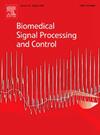基于三维卷积神经网络的房颤CT扫描脑卒中预测算法
IF 4.9
2区 医学
Q1 ENGINEERING, BIOMEDICAL
引用次数: 0
摘要
中风通常与脑梗死有关,是一种严重的疾病,由流向大脑的血液中断引起。房颤(AF)是一种常见的心律失常,显著增加了中风的风险,与普通人群相比,房颤患者发生中风的可能性高出10倍。早期发现房颤和血栓的存在是预防中风的关键。在这项研究中,我们提出了一种基于心脏CT图像训练的3D卷积神经网络(CNN)的ai辅助诊断系统来预测AF患者的卒中风险。与传统的二维CNN模型相比,本文提出的三维CNN模型能够有效地捕获心脏结构的三维空间特征,提高了精度和性能。3D CNN模型在测试集上的准确率达到了令人印象深刻的92.92%,AUC为0.97。研究结果强调了人工智能辅助诊断的潜力,以及利用心脏CT图像增强心血管疾病诊断的意义。这种方法为提高卒中预防的准确性、效率和临床决策提供了有希望的机会。未来的研究应侧重于扩展数据集,优化模型架构,并进一步整合额外的临床数据,以提高人工智能模型的预测性能。本文章由计算机程序翻译,如有差异,请以英文原文为准。
Stroke prediction algorithm based on 3D convolutional neural network for CT scans in patients with atrial fibrillation
Stroke, commonly associated with cerebral infarction, is a severe condition caused by disrupted blood flow to the brain. Atrial Fibrillation (AF), a prevalent cardiac arrhythmia, significantly increases the risk of stroke, with AF patients having a tenfold higher likelihood of stroke compared to the general population. Early detection of AF and the presence of blood clots is crucial for stroke prevention. In this study, we propose an AI-assisted diagnostic system based on a 3D convolutional neural network (CNN) trained on cardiac CT images to predict the risk of stroke in AF patients. Compared to traditional 2D CNN models, the proposed 3D CNN approach effectively captures 3D spatial features of cardiac structures, resulting in improved accuracy and performance. The 3D CNN model achieved an impressive accuracy of 92.92% and an AUC of 0.97 on the test set. The findings highlight the potential of AI-assisted diagnosis and the significance of utilizing cardiac CT images in enhancing cardiovascular disease diagnosis. This approach offers promising opportunities to improve accuracy, efficiency, and clinical decision-making in stroke prevention. Future research should focus on expanding the dataset, optimizing the model architecture, and integrating additional clinical data further to enhance the predictive performance of the AI model.
求助全文
通过发布文献求助,成功后即可免费获取论文全文。
去求助
来源期刊

Biomedical Signal Processing and Control
工程技术-工程:生物医学
CiteScore
9.80
自引率
13.70%
发文量
822
审稿时长
4 months
期刊介绍:
Biomedical Signal Processing and Control aims to provide a cross-disciplinary international forum for the interchange of information on research in the measurement and analysis of signals and images in clinical medicine and the biological sciences. Emphasis is placed on contributions dealing with the practical, applications-led research on the use of methods and devices in clinical diagnosis, patient monitoring and management.
Biomedical Signal Processing and Control reflects the main areas in which these methods are being used and developed at the interface of both engineering and clinical science. The scope of the journal is defined to include relevant review papers, technical notes, short communications and letters. Tutorial papers and special issues will also be published.
 求助内容:
求助内容: 应助结果提醒方式:
应助结果提醒方式:


